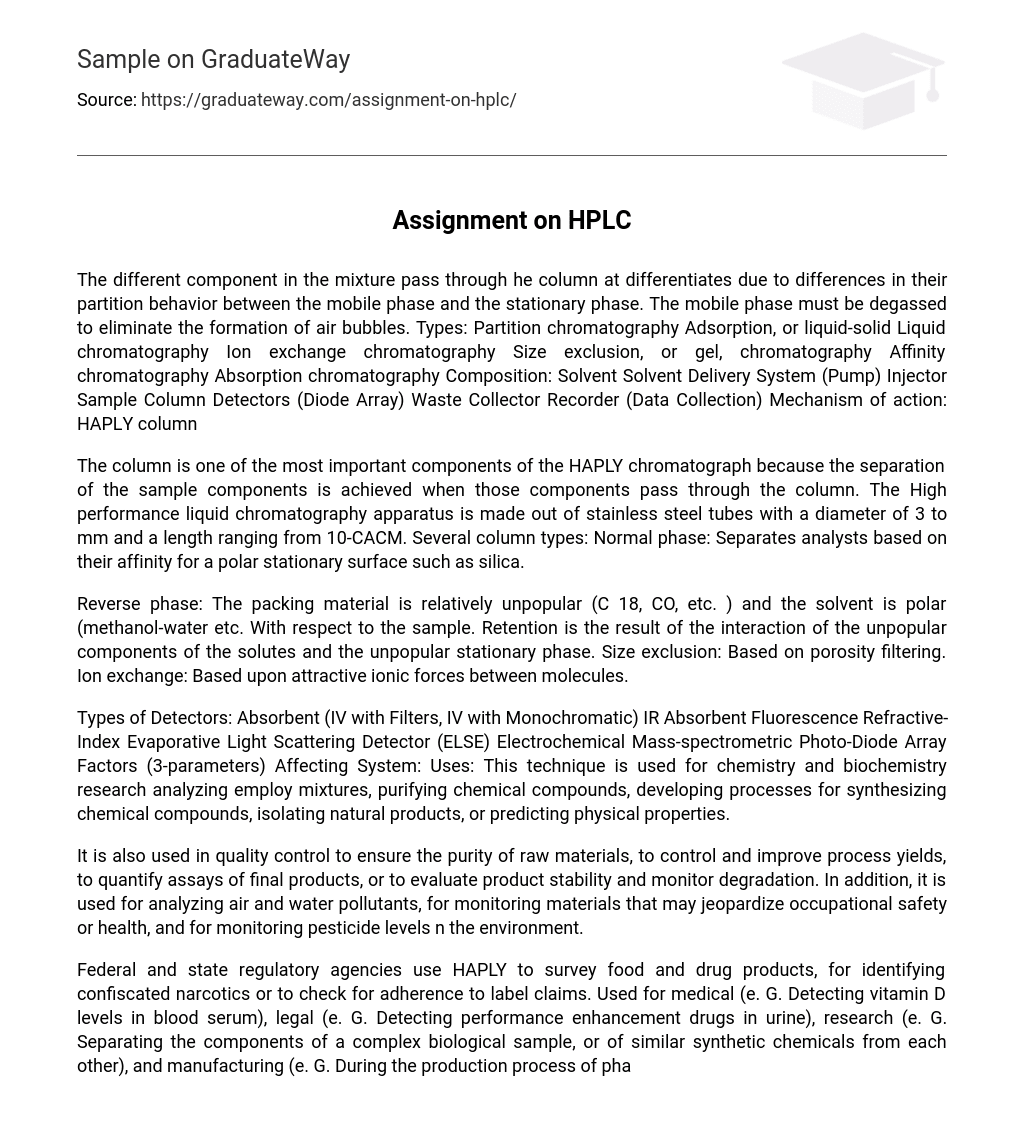The different component in the mixture pass through he column at differentiates due to differences in their partition behavior between the mobile phase and the stationary phase. The mobile phase must be degassed to eliminate the formation of air bubbles. Types: Partition chromatography Adsorption, or liquid-solid Liquid chromatography Ion exchange chromatography Size exclusion, or gel, chromatography Affinity chromatography Absorption chromatography Composition: Solvent Solvent Delivery System (Pump) Injector Sample Column Detectors (Diode Array) Waste Collector Recorder (Data Collection) Mechanism of action: HAPLY column
The column is one of the most important components of the HAPLY chromatograph because the separation of the sample components is achieved when those components pass through the column. The High performance liquid chromatography apparatus is made out of stainless steel tubes with a diameter of 3 to mm and a length ranging from 10-CACM. Several column types: Normal phase: Separates analysts based on their affinity for a polar stationary surface such as silica.
Reverse phase: The packing material is relatively unpopular (C 18, CO, etc. ) and the solvent is polar (methanol-water etc. With respect to the sample. Retention is the result of the interaction of the unpopular components of the solutes and the unpopular stationary phase. Size exclusion: Based on porosity filtering. Ion exchange: Based upon attractive ionic forces between molecules.
Types of Detectors: Absorbent (IV with Filters, IV with Monochromatic) IR Absorbent Fluorescence Refractive-Index Evaporative Light Scattering Detector (ELSE) Electrochemical Mass-spectrometric Photo-Diode Array Factors (3-parameters) Affecting System: Uses: This technique is used for chemistry and biochemistry research analyzing employ mixtures, purifying chemical compounds, developing processes for synthesizing chemical compounds, isolating natural products, or predicting physical properties.
It is also used in quality control to ensure the purity of raw materials, to control and improve process yields, to quantify assays of final products, or to evaluate product stability and monitor degradation. In addition, it is used for analyzing air and water pollutants, for monitoring materials that may jeopardize occupational safety or health, and for monitoring pesticide levels n the environment.
Federal and state regulatory agencies use HAPLY to survey food and drug products, for identifying confiscated narcotics or to check for adherence to label claims. Used for medical (e. G. Detecting vitamin D levels in blood serum), legal (e. G. Detecting performance enhancement drugs in urine), research (e. G. Separating the components of a complex biological sample, or of similar synthetic chemicals from each other), and manufacturing (e. G. During the production process of pharmaceutical and biological products) purpose.





